Download PDF
WHAT’S HAPPENING
Coming Soon: All-New Patient Education Videos
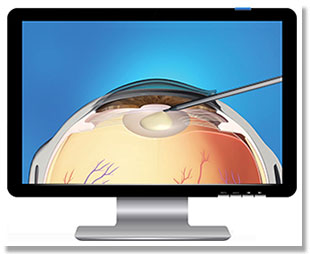 |
| AVAILABLE IN NOVEMBER. Save 30% when you buy 4 or more of the video collections. The following subspecialties are available: cataract and refractive surgery, glaucoma, oculoplastics, pediatrics, and retina. |
Next month, the Academy will launch 4 all-new patient education subspecialty video collections, a new video for the ophthalmic waiting room, and an upgraded version of the Digital-Eyes Ophthalmic Animations for Patients. These complete the Academy’s revamp of its entire suite of patient education materials, including redesigned and rewritten brochures and handouts, and a retina patient education video collection.
The waiting room video briefly discusses many common ophthalmic conditions along with informational and entertaining segments on eyes and vision.
Each subspecialty-focused patient education video collection (cataract/ refractive surgery, glaucoma, oculoplastics, and pediatrics) explains benefits, risks, and alternatives for many of today’s common procedures. The collections are intended to accomplish the following:
- Educate patients through visual animations and easy-to-understand explanations that will improve patients’ comprehension
- Put patients at ease while setting realistic expectations for their particular conditions
- Deliver accurate, consistent information to strengthen your informed consent process and reduce malpractice risk
Features. All the patient education videos are concise and free of advertising. They are produced in high definition and include high-quality animations. The videos are available in both English and Spanish versions. You can play them on any platform, from desktops and tablets to smartphones. With the waiting room video, new topics, soundtracks, and Q&As have been added.
Add a personal touch. The videos are also customizable—you can add a personalized introduction to any video. While you’re attending AAO 2015, you can film an introduction in the Video Production Studio in the Resource Center (Booth 2632). Contact Daniel Porter at dporter@aao.org or 415-561-8549 before the meeting to make an appointment to schedule your shoot.
For more information about these new videos, visit www.aao.org/patientvideos.
TAKE NOTICE
PQRS—Oct. 31 Deadline to Sign Up for IRIS Registry Portal
You can use the IRIS Registry Web portal to report PQRS manually (no EHR required), provided you sign up by Oct. 31, submit a signed consent form by Dec. 1, and enter all the necessary data into the portal by Jan. 15, 2016.
What are your IRIS Registry options? You can use the IRIS Registry Web portal either as a Qualified Registry, which would involve reporting the standard PQRS measures, or as a Qualified Clinical Data Registry, which gives you access to additional eye care measures developed by the Academy.
This year’s deadlines have already passed to sign your practice up for automated EHR-based reporting via the IRIS Registry (June 1) and for manual reporting of the Cataracts Measures Group via the IRIS Registry Web portal (Aug. 1).
Why report PQRS? If you fail to successfully report PQRS this year, you will be subject to a 2% penalty on 2017 Medicare payments, plus a value-based payment modifier cut of up to 2% (for smaller practices) or 4% (larger practices). To learn more about PQRS reporting and penalties, visit www.aao.org/pqrs.
To sign up, visit www.aao.org/iris-registry/application-process.
Seeking Outstanding Ophthalmologists
Would you like to nominate a colleague for the 2016 Outstanding Humanitarian Service Award? The Academy must receive your nomination by March 17, 2016. The award recognizes Academy fellows and members who have made extraordinary contributions to humanitarian efforts, such as participation in charitable activities, care of the indigent, and community service.
To obtain a nomination form, visit www.aao.org/about/awards/humanitarian.
Ask the Ethicist: Use of Mobile Devices in Clinical Care
Q: I am a third-year resident and recently responded to a question from a second-year resident following up on a recently admitted patient. I knew exactly who he was asking about, and I replied by text, “She was admitted, DDX is filamentary fungal keratitis. Pretty rare. She’s in 517. Take a look.” I was using my personal cell phone, which is not encrypted. Later, I learned that this is considered a HIPAA breach because the text included enough information that the patient could possibly be identified by people in the community. Can patients ever be discussed via text without violating their privacy?
A: Although it is common for health care providers to access and relay protected health information (PHI) to other providers using mobile devices, doing so is risky. This is because the devices are small, portable, easily visible to others, unlikely to be password protected or encrypted, likely to connect with Wi-Fi (further risking interception), and highly vulnerable to being stolen.
If you choose to communicate this way, be sure to use an encrypted, password-protected device. When discussing patients, you must remove any information that could be used to identify them. Per HIPAA, there are 18 identifiers of PHI—they include everything from the patient’s social security number to the vehicle identification number of their automobile.
All communications with patients, the public, and colleagues, whether via social media or in more traditional frameworks, must adhere to appropriate standards of ethics and professionalism in order to maintain the public’s trust in the medical profession. Your training facility likely has a program for trainees about HIPAA and patient privacy. Take advantage of what information is available because you can’t plead ignorance once you’ve been the source of a leak.
D.C. REPORT
Physician Pay Battle
The Academy is getting ready for the quickly approaching Nov. 1 publication of the 2016 Medicare Physician Fee Schedule—ophthalmology codes are being targeted by the Centers for Medicare & Medicaid Services (CMS) as potentially misvalued. We will see the final result of our fight to defend 2016 values for the major retinal detachment codes as well as trabeculectomy services. CMS, however, continues to target ophthalmology as misvalued with new challenges ahead for 2017 payments. CPT 92002, a code used for new patients during their first office visit, is one of several new codes being targeted or challenged as “misvalued.”
CPT 92002: The background. In the mid-1970s, the AMA decided that the existing office visit billing guidelines didn’t necessarily apply to ophthalmologists, especially considering how they perform examinations. To address this disparity, a new set of codes for ophthalmologists was established; since then, ophthalmology has experienced a lighter documentation burden thanks to the “eye visit” codes. In fact, codes like CPT 92002 through 92014 help Academy members to run a more efficient practice with greater focus on quality patient care.
CMS review of 92002. The CMS assessment of 92002 involves reviewing the valuation and, when codes are found to be misvalued, updating and revising the payment accordingly. Typically, CMS requires that all related codes also be reviewed, which could mean that services for both new and established eye exam visits would also be included. During the process, the agency seeks input from affected specialties through the AMA/Specialty Society Relative Value Scale Update Committee (RUC) regarding the most accurate valuation of services.
Where it stands today. The Academy believes that based on CMS’ own standards, the agency has inappropriately identified CPT 92002 as potentially misvalued. The Academy maintains that physicians are appropriately compensated for this service, and questions why it should even be under consideration. CMS has stated that their cost-saving efforts are focused on codes with significant increases in payment or volume. But consider the facts: in 2013, 222,037 Medicare patients were coded under CPT 92002, a decrease from 10 years prior. Additionally, the work value hasn’t changed for this service since 1996.
The Academy continues to press the RUC and CMS to recognize that CPT 92002 represents fair value for physicians and patients. If they don’t, we will work on next steps to preserve fair payment for physicians.
CANDIDATES’ VIEWS
Cynthia A. Bradford, MD
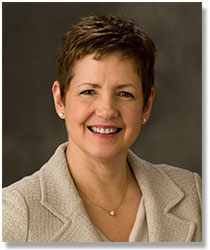 Board of Trustees Nominee for President-Elect
Board of Trustees Nominee for President-Elect
- Professor of ophthalmology and full-time comprehensive ophthalmologist for 28 years, director of ophthalmology education for primary care physicians, director of medical student ophthalmology education, and resident cataract surgery instructor.
- Professional society involvement for the Academy includes the Interspecialty Committee, Basic and Clinical Science Course Committee, Executive Editor for Basic Ophthalmology editions 8 and 9, Secretary for State Affairs, Senior Secretary for Advocacy, Membership Advisory Committee, Nominating Committee, Board of Trustees Executive Committee, Health Policy Committee, and the Leadership Development Program (LDP). State society involvement includes President of the Oklahoma Academy of Ophthalmology. International involvement includes Pan-American Association of Ophthalmology (PAAO) Board membership and interaction with LDP for the European Society of Ophthalmology, PAAO, and the Middle East Africa Council of Ophthalmology.
- I am dedicated to upholding the profession of ophthalmology, which is founded on education and is well known for innovation. I recognize the stormy time of change ophthalmology faces on a state and federal level and view this as an opportunity to improve quality and efficiency of patient care.
Louis B. Cantor, MD
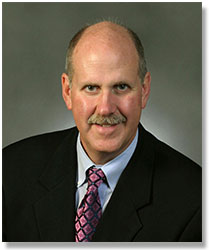 Board of Trustees Nominee for Senior Secretary for Clinical Education
Board of Trustees Nominee for Senior Secretary for Clinical Education
- Background. I serve as Director of the Glaucoma Service and Chair of the Indiana University Department of Ophthalmology. I have served as Residency Program Director, Chair of the Ophthalmology Residency Review Committee (RRC) of the Accreditation Council for Graduate Medical Education, and as Chair of the Council of RRC Chairs.
- AAO education experience. I first served as a member, then as Chair, of the Basic and Clinical Science Course (BCSC) Glaucoma Committee before being elected Chair of the BCSC. I served as Secretary for Ophthalmic Knowledge before being elected as Senior Secretary. It is a privilege to be nominated for a second term as Senior Secretary for Clinical Education.
- Goals. The Academy has a critical role in providing education as the pace and depth of new clinical information challenges physicians to incorporate the newest findings and discoveries into clinical practice. If elected to a second term as Senior Secretary, I will continue to seek to expand our educational programs, both within the United States and globally.
Michael F. Chiang, MD
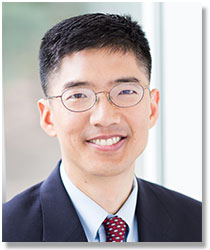 Board of Trustees Nominee for Trustee-at-Large
Board of Trustees Nominee for Trustee-at-Large
- Clinical experience. Specializes in pediatric ophthalmology, strabismus, and retinopathy of prematurity. Board certified in clinical informatics. Works at the Oregon Health & Science University (OHSU) Casey Eye Institute; was previously at Columbia University.
- Research. Professor of ophthalmology and medical informatics at OHSU and a vice-chair for research in the ophthalmology department. Leads an NIH-funded research group studying telemedicine, EHRs, image analysis, and genotype-phenotype correlation to improve delivery of ophthalmic care. Previous Chair of the Academy’s Medical Information Technology Committee and current member of the IRIS Registry Executive Committee, Chair of the Task Force on IRIS Registry Analytics and Research, and member of the Academy’s Telemedicine workgroup.
- Education. Previously worked as director of medical student education in ophthalmology at Columbia University and currently directs an NIH-funded training program in visual science for graduate students and postdoctoral fellows at OHSU.
Cynthia Mattox, MD, FACS
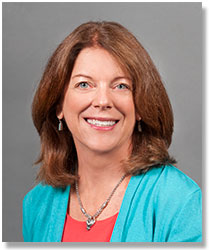 Board of Trustees Nominee for Trustee-at-Large
Board of Trustees Nominee for Trustee-at-Large
- I have spent 23 years as a glaucoma subspecialist at New England Eye Center in Boston, an academic/private practice hybrid, with a tertiary care facility, 7 satellite offices, and a freestanding ambulatory surgery center. As Vice Chair of the practice, I am the physician liaison for billing, EHR, and clinical operations. I understand the challenges that face the diverse members of the Academy.
- Currently Vice-President of the American Glaucoma Society, leading projects that have protected access and ensured safety for patients. I have promoted career advancement for women in our profession and am involved in my state and regional ophthalmology societies. I served the Academy as Associate Secretary of the Annual Meeting, a member of the Health Policy committee since 2004, and Chair of the IRIS Measure Development Taskforce.
- I will bring enthusiasm and experience to the Board of Trustees, listen carefully, propose innovative solutions, and be mindful of unanticipated problems. I will faithfully represent the members’ voice on the Board.
Mathew W. MacCumber, MD, PhD
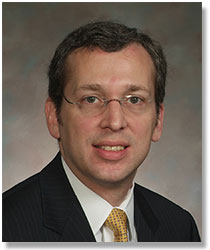 Board of Trustees Nominee for Council Chair
Board of Trustees Nominee for Council Chair
- Strong background in support of ophthalmology. Completed the Academy’s LDP. Served as the delegate to the AMA and on the Academy Council from the American Society of Retina Specialists (ASRS). Completed a 6-year term on the Board of Directors of the Macular Society as Website Chair. Served on Academy committees that developed measures for the PQRS and the IRIS Registry, and cochaired 6 symposia on health care economics at the annual meeting. Currently serve as the Vice Chair of the Academy Council and a member of the Academy Board of Trustees, the President of the Chicago Ophthalmological Society, and on the ASRS Board of Directors. Received the Academy’s Achievement Award (2004), Senior Achievement Award (2015), and Secretariat Awards for Education and Advocacy (2008), and the ASRS Honor Award (2005) and Senior Honor Award (2009).
- Strong background in ophthalmic teaching and research. Served as an examiner for the ABO, chaired the retina section of the Academy’s Maintenance of Certification Exam Review Course, and, from 2006 through 2013, directed the vitreoretinal fellowship program at Rush University Medical Center and Illinois Retina Associates. Personally authored or coauthored 34 peer-reviewed articles and 10 book chapters and edited Management of Ocular Injuries and Emergencies. Served as principal investigator for 20 multicenter clinical trials, including the NIH-funded Submacular Surgery Trials, the Studies of the Ocular Complications of AIDS, and several protocols for the Diabetic Retinopathy Clinical Research Network.
- I believe the Academy acquires new ideas, accountability, and strength from open debate and communication within the Council. With my experience in academic medicine, private practice, research, and advocacy, I humbly believe that I can facilitate the role of the Council as Chair. Thank you for considering me during this vote. I would be honored to serve in this important capacity.
Lynn K. Gordon, MD, PhD
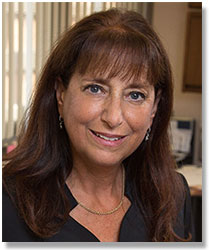 Board of Trustees Nominee for Council Vice Chair
Board of Trustees Nominee for Council Vice Chair
- Academy service and awards. I have been privileged to serve the Academy Council for the State Society Section and the Subspecialty/Specialized Interest Section and am a past Deputy Section Leader. Committee activities included the Performance Measures Workgroup, Basic and Clinical Science Course Neuro-Ophthalmology Section, Nominating Committee, Awards Committee, and Credentials Committee. I received both the Achievement and Senior Achievement Awards and completed the LDP in 2008.
- Leadership. In addition to my Academy service, I am Past President of the California Academy of Eye Physicians and Surgeons, Los Angeles Eye Society, and Women in Ophthalmology. Currently, I am Chair-Elect of the Group on Women in Medicine and Science for the American Association of Medical Colleges.
- Professional experience. As a clinician-scientist for 3 decades, I understand the challenges of providing excellent clinical care while maintaining an active research portfolio and training the next generation of physicians.